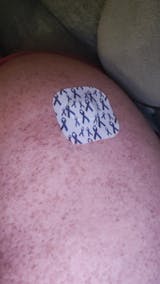
Breaking Down Nutrition Labels
Cleaning up your diet and eating healthy can be overwhelming with the endless options of “healthy” food items in the aisles of the grocery store. Understanding how to read a nutrition label is a must-use tool for making better food choices. Once you understand how to quickly scan the Nutrition Facts label for key information, you’ll be able get in and out of the store faster, eat better, and improve your health.
First things first, look at the Serving Size
Portion control and calorie counting are key for weight management. It’s important to check the serving size on the nutrition label to help you to eat proper portions and understand how much of the food you need to eat to get the nutrients that are listed in other sections of the label.
Using the serving size to manage portions takes the stress out of planning. The serving size on the package is not necessarily the amount of food you should eat, but instead, it is a tool to help you determine how many calories and other nutrients you are getting out of eating each serving.
Counting Calories
No matter which eating plan or diet you follow, calories matter. While eating quality calories filled with nutrients will do more for your body than empty calories filled with sugar, a calorie is a calorie and at the end of the day, we all need a certain amount of them to achieve our goals.
The calorie count on the nutrition facts panel shows how many calories are in a typical serving size. At the grocery store, it can be helpful to compare different brands and products to make the best choice for you.
Understanding Fat and Cholesterol
There is a lot of varying opinions around how much fat one should eat on a daily basis. In diets like the keto diet, the fatter the better, while other diets push to eliminate it as much as possible. No matter how much fat you’re looking to take in, remember that it never hurts to consume anything in moderation. Even though fat is higher in calories than protein and carbohydrates, eating healthy fats will help you to stay satisfied throughout the day.
When you read the nutrition label, first check the total number of fat grams in the food. Then check the numbers below for further information on the types of fat.
- Saturated fat. Experts recommend that you eat less saturated fat and more polyunsaturated fat or monosaturated fat for optimal health. That being said, it’s better to choose food with a lower number of saturated fats.
- Trans fat. It’s widely known that trans fats are not good for your body. Try to choose foods with as little trans fat as possible.
- Cholesterol. Doctors will likely tell you to reduce dietary cholesterol intake if you’re at risk for certain diseases. If that’s the case for you, keeping your eye on this number is important.
All About Carbohydrates
Whether or not you're counting carbs, the important piece of information here is choosing the best sources of carbohydrates. The “Carbohydrates” listing on the Nutrition Facts label provides some information you need to make healthier decisions. Check these numbers to help you understand the quality of your carbs in your diet.
- Dietary fiber. Fiber is good. Fiber will help you feel full longer, making it easier to stick to your diet. Choose foods with a high number of dietary fibers.
- Sugars. Here’s an easy one to watch. Watch your sugar intake for weight loss, weight maintenance, and optimal health. Selecting foods with a low number of sugars will help your blood sugar and insulin levels stay consistent, which will help you feel energized and healthy all day long.
The Power Of Protein
Protein is the macronutrient to thank for muscle building. By choosing foods that have high levels of protein, like lean meats and dairy products, you are helping your body get the protein it needs to make you stronger. The more muscle your body has, the quicker your body burns calories, so protein is your friend!
Vitamins and Minerals
The Nutrition Facts panel also highlights various vitamins and minerals found in the product and there can be a lot to look through.
Sodium is important to look at, as too much can cause harm. Most experts recommend that a healthy adult should take in no more than 2,300 milligrams per day. If you have a specific health condition, such as high blood pressure or kidney disease, consult your doctor or nutritionist to determine the right amount for you.
Other vitamins and minerals, like vitamin A, vitamin C, calcium, and iron, are also listed. Choose foods that are plentiful in micronutrients like these and it will make it easier for you to build a strong, fit and healthy body.
A Note About Percent Daily Value
When looking at the nutrition label, you’ll notice the right sides of the columns display percentages of Daily Value. These percentages tell you how much of each nutrient contributes to your total diet if your daily calorie consumption equals 2,000 calories. Note that if your diet varies away from 2,000 calories per day, you’ll need to readjust the percentages.
While you’ll find nutrition labels on any packaged food item in the grocery store, it’s a good rule of thumb to shop outside of the aisles (this means shopping in fresh produce and meat counters). In order to figure out the nutrients in any produce or meat that doesn’t have a label on it, a quick Google search will break down any food for you.




